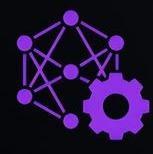DAiO
Empower decision-making in decentralized governance via our AI-powered DAO. Personalized bots ensure quorum by casting votes based on sentiment analysis when users miss deadlines, boosting outcomes.
Created on 23rd July 2023
•
DAiO
Empower decision-making in decentralized governance via our AI-powered DAO. Personalized bots ensure quorum by casting votes based on sentiment analysis when users miss deadlines, boosting outcomes.
The problem DAiO solves
Inspired by our roles as developers & board members running our university's DAO, we encountered an unexpected challenge: a lack of active participation, despite having a substantial number of members and no restrictive tokenomics. This sparked a thought—what if we could empower individuals to have their voices heard by enabling someone to vote on their behalf, embodying their sentiments and influencing their votes? This led us to envision DAiO, where decentralized governance meets personalized education. As university students ourselves, we also recognized the restrictions imposed on students in pursuing their desired courses. Thus, we made it our moral principle to create DAiO, a platform exclusively for teachers and students, to provide curriculum freedom and empower passion-driven teaching and learning.
DAiO is a cutting-edge platform that tackles the challenge of low participation in DAOs through personalized AI bots and advanced technical solutions. By leveraging sentiment analysis and the BERT model, the platform quantifies user sentiment and creates personalized bots that mirror their voting preferences.
How ?? During the onboard process for any new user of the DAiO, the user will be directed to answer a few sentiment gauging questions. The responses to these questions are run through a sentiment quantification process and we create a bot that is personalised to that user henceforth.
This innovative approach maximizes participation by allowing the bots to vote on behalf of users who fail to cast their votes, ensuring their voices are heard. Therefore whenever the user fails to vote, the bot mirrors the sentiment and votes in the user's stead thereby maximizing participation.
With a separate wallet system for AI voting and seamless integration between blockchain and AI, DAiO creates a secure and efficient environment for decentralized governance, enhancing decision-making in DAOs.
Challenges we ran into
During the development of DAiO, we encountered several challenges that required extensive research, trial and error, and technical expertise. Here are the challenges we faced and how we successfully overcame them:
Figuring out how to use sentiment analysis: Implementing sentiment analysis to train bots and replicate user sentiment was a complex task. We conducted in-depth research on various sentiment analysis techniques and models. Ultimately, we employed the BERT model for sentiment quantification, which provided accurate and insightful results.
Implementing VRF in DAO for dispute handling: Integrating Chainlink VRF into our DAO for dispute handling required us to learn and understand the technology from scratch. We extensively studied the use cases and documentation provided by Chainlink, which enabled us to ideate and implement a dispute handling mechanism using the Chainlink VRF funding model. This allowed us to randomly select 10 voters from the DAO membership to handle disputes, ensuring fairness and preventing a 51% attack.
Mitigating the risk of AI having wallet access: We recognized the potential risks associated with AI having direct access to user wallets. To mitigate this risk, we designed and implemented a separate wallet system specifically for AI to vote on behalf of users via mapping AI wallet address to the user. This approach ensured the security and integrity of user funds, providing a safeguard against potential vulnerabilities.
Enabling AI to vote after proposal closure in a completely automated manner: Developing an AI-powered automatic vote feature that activates after the voting period ends required meticulous planning and technical implementation. We worked on integrating AI and smart contracts, leveraging the capabilities of the FastAPI backend framework. Through extensive testing and refining, we successfully achieved a seamless and automated process for AI voting, enhancing the efficiency of decision-making in our DAO.
Tracks Applied (3)
